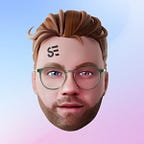4 AR/VR Design Courses For UX/UI Designers
One of the most popular trends today is AR/VR design. It affects the work of UI/UX designers in one way or another. Therefore, it is worth learning new skills and approaches to stay competitive, develop projects and make them more technological.
AR/VR design courses can help with this. It is on them that you can learn the tools and gain knowledge to provide AR perception of reality through mobile apps and web applications.
While researching this issue, I have compiled a list of the best courses. I want to share it with you.
Mixed Reality design
The Mixed Reality Design course consists of three modules — 6 hours of helpful content.
You can start with the Introduction to Mixed Reality module. It suits beginners and helps you build a solid foundation of basic concepts, terminology, and design processes unique to the mixed reality design environment.
After completing the module, you can differentiate between virtual and augmented reality, try designing and developing 3D applications, and understand how mixed reality enhances the user experience in real-world applications.
Then, you can move on to Designing for mixed reality. You’ll find everything you need to develop a mixed reality application, including valuable tools.
In the third module, you will be treated to a Challenge project — Building an Augmented Reality app for HoloLens 2.
Bezi Manual
Bezi is a programme similar to Figma but for AR/VR designers.
You can design your apps without installing or downloading anything. I recommend using the AR/VR design tutorials collected on the same platform to learn the tools and techniques.
Design of user experience and interaction for AR/VR/MR/XR course from the University of Michigan
In this course, you will learn how to analyse new and existing user experiences with XR technologies from a moral perspective. You will then practice creating colouring sheets and physical and digital prototypes of XR experiences, learn how to form technical requirements for implementing your own XR prototypes and incorporate augmented reality technologies into your workflow by working with templates and tools that allow you to preview physical prototypes on AR/VR devices.
Overall, the course is vibrant and valuable. It consists of 4 modules, and it started on the 26th of February. So it’s a great time to join.
UX Design for Virtual Reality
This course promises to provide skills, knowledge, methodologies and best practices for creating engaging, memorable and positive virtual reality experiences through UX design.
You will receive one lesson each week with no time limit to complete it. The course runs for six weeks and over 15 hours of learning. The program looks excellent, from the basics to virtual reality prototyping and testing.
I hope this post was helpful to you. If you’ve taken AR/VR design courses or plan to, please let me know which one you chose.
